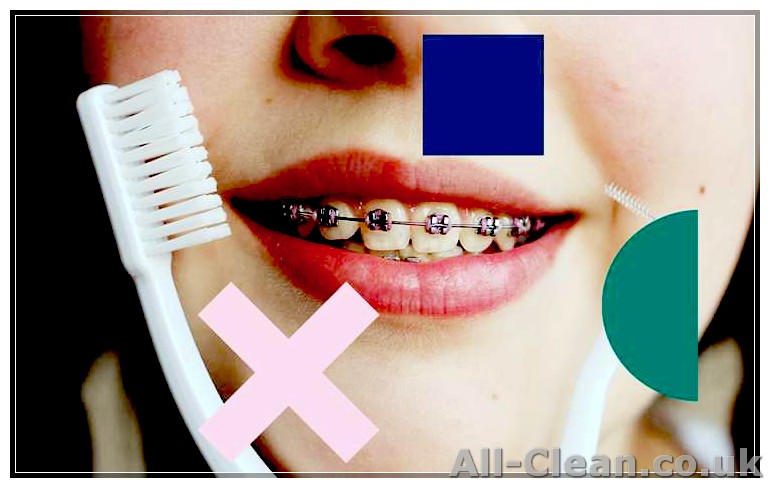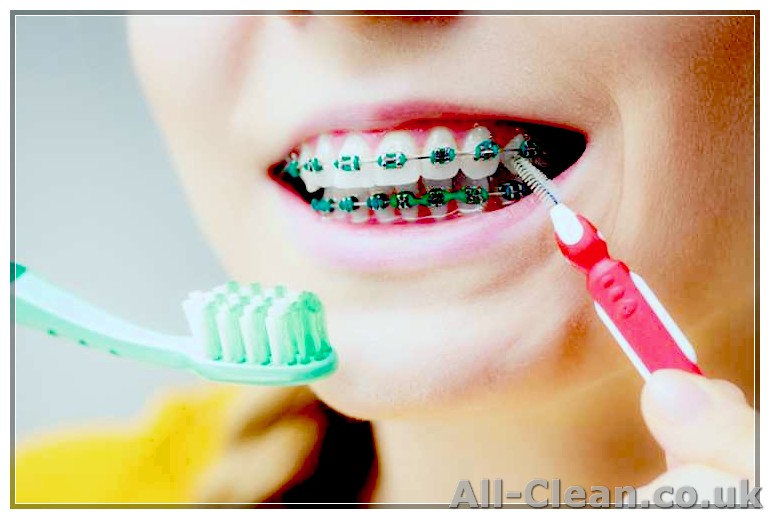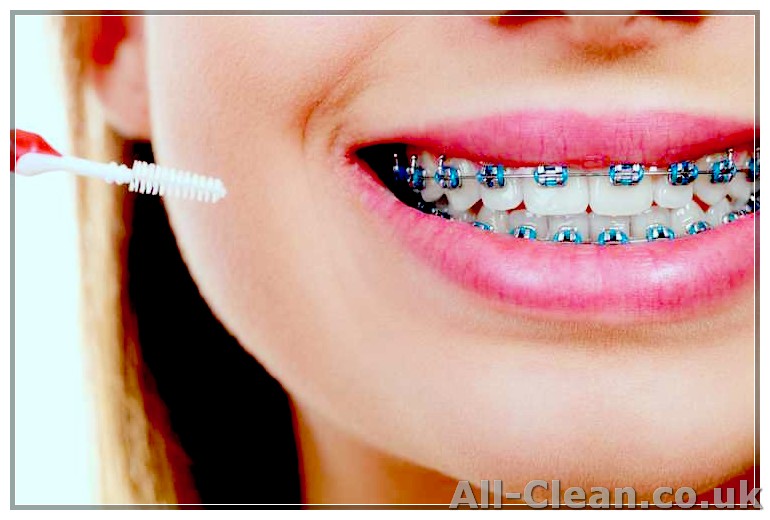
Having braces can be a major adjustment to your oral hygiene routine. With the additional components of brackets and wires, cleaning your teeth requires a bit more time and effort. However, proper maintenance and cleaning of your braces are essential for achieving the best results and maintaining good oral health.
When it comes to brushing, you need to pay extra attention to the areas around the brackets. Start by using a soft-bristle toothbrush at a 45-degree angle and gently sweep it along the gum line. Be sure to brush both the front and back of your teeth, as well as the brackets themselves. Using a toothpaste with fluoride can help prevent cavities and keep your breath fresh throughout the day.
Flossing is another important step in keeping your teeth and braces clean. It can be a bit tricky at first, but with practice, you’ll become more comfortable. There are different options for flossing with braces, such as using special floss threaders or orthodontic floss picks. Whichever method you choose, make sure to floss between each tooth and around the wires to remove any food particles or plaque that may be trapped.
In addition to brushing and flossing, there are other tools and techniques that can help you maintain good oral hygiene with braces. For example, using an interdental brush can reach those hard-to-reach areas between the brackets. Mouthwash can also be used to rinse your mouth after brushing and flossing, helping to keep your mouth fresh and clean.
It’s also important to be mindful of what you eat and drink while wearing braces. Certain foods, such as hard candies or nuts, can damage the brackets or wires. Sticky or chewy foods can also get stuck in your braces, leading to plaque buildup and potential decay. Stick to a well-balanced and healthy diet, avoiding foods that can cause problems for your braces.
Finally, don’t forget to visit your orthodontist regularly for check-ups and adjustments. They will be able to assess the progress of your treatment and provide any necessary advice or recommendations. If you have any concerns or questions about caring for your braces, don’t hesitate to ask your orthodontist or dental professional for guidance.
- Choosing the Right Toothbrush
- Flossing Made Easy with Braces
- Which type of floss should I use?
- Do I need to use mouthwash or fluoride toothpaste?
- How often should I floss?
- How should I floss with braces?
- Are there any special tips for flossing with different types of braces?
- Using Special Brushing Tools for Effective Cleaning
- 1. Interdental Brushes
- 2. Orthodontic Toothbrushes
- 3. Water Flossers
- 4. Brushing Aids
- 5. Tongue Cleaners
Choosing the Right Toothbrush
When you have braces, it’s important to choose the right toothbrush to ensure that you can clean your braces effectively and keep your teeth and gums healthy. Here are some tips to help you choose the right toothbrush:
- Type of bristles: Look for a toothbrush with soft bristles. Soft-bristled toothbrushes are gentle on your teeth and gums and less likely to cause any damage to your braces or gums.
- Manual or electric: Both manual and electric toothbrushes can be used with braces. It’s a matter of personal preference. Some people find electric toothbrushes easier to use and more effective for cleaning braces.
- Toothbrush head: Look for a toothbrush with a small head that can easily reach all the areas around your braces. A small head allows you to clean hard-to-reach areas more effectively.
- Toothbrush angle: Choose a toothbrush with a angled head. An angled head allows you to clean the brackets and wires of your braces more easily, as it can get into those tight spaces more effectively.
- Toothbrush design: Look for a toothbrush that has a non-slip grip, so you can comfortably hold it while brushing your teeth with braces.
Remember, it’s also important to change your toothbrush every 2 to 3 months or as soon as the bristles start to fray. A worn-out toothbrush won’t clean your teeth and braces as effectively as a new one.
When it comes to choosing the right toothpaste for your braces, it depends on your preferences and any specific oral health concerns you may have. Many dentists recommend using a fluoride toothpaste to help prevent cavities. There are also toothpastes specifically formulated for braces, like Colgate’s Brace-Cleaning toothpaste, that can help remove plaque and stains caused by braces.
Once you have chosen the right toothbrush and toothpaste, it’s time to start brushing. Make sure to brush your teeth at least twice a day, for two minutes each time. Pay extra attention to the areas around your brackets and pick a brushing technique that works best for you.
In addition to brushing, proper flossing is also important when you have braces. Floss at least once a day, preferably before bedtime. There are several types of floss and flossing tools available that can help make flossing with braces easier. Speak to your orthodontist or dentist to find out which type of floss or tool is best for you.
Remember, while wearing braces, it’s important to take extra care of your oral hygiene. Brush and floss frequently, and avoid foods that can get stuck in your braces, such as sticky candies and chewing gum. If you participate in sports, wear a mouthguard to protect your braces from potential damage.
By choosing the right toothbrush and following a proper brushing and flossing routine, you can keep your teeth and braces clean and healthy, preventing cavities and other oral health issues. If you have any questions or need further guidance, don’t hesitate to ask your orthodontist or dentist for help.
Flossing Made Easy with Braces
Flossing with braces is an important part of maintaining a healthy smile. While it may seem a bit challenging at first, with the right techniques and tools, you can effectively remove plaque and food particles trapped between your braces and teeth.
Here are some common questions about flossing with braces and the best practices to follow:
Which type of floss should I use?
When flossing with braces, it’s important to use a special type of floss known as an orthodontic floss threader. This tool helps guide the floss under the wires of your braces, making it easier to clean the areas between your teeth and braces where food can get trapped.
Do I need to use mouthwash or fluoride toothpaste?
While using mouthwash or fluoride toothpaste is not necessary for flossing, it can help provide extra protection for your teeth. Mouthwash helps kill bacteria and leaves your mouth feeling fresh. Fluoride toothpaste strengthens your teeth and helps prevent cavities.
How often should I floss?
It’s important to floss at least once a day, ideally before bedtime. This ensures that any food particles or plaque accumulated throughout the day are properly removed. If you participate in sports or have a particularly sticky meal, it’s a good idea to floss right away to keep your teeth clean.
How should I floss with braces?

Here’s a step-by-step guide on how to floss effectively with braces:
- Thread the orthodontic floss threader with a piece of floss.
- Gently insert the floss threader under the wires of your braces.
- Once the floss is under the wires, hold it firmly and carefully slide it up and down between your teeth.
- Be sure to go all the way to the gum line and perform a gentle sweeping motion to remove any food particles or plaque.
- Repeat this process for each tooth, using a fresh section of floss each time.
- After flossing, rinse your mouth with water or mouthwash to remove any remaining debris.
Remember to be gentle and take your time while flossing around your braces to avoid damaging the wires or brackets.
Are there any special tips for flossing with different types of braces?
There are different types of braces, such as metal braces or clear aligners like Invisalign. Regardless of the type of braces you wear, the flossing technique remains the same. However, with metal braces, you may need to use extra caution to prevent the floss from getting caught on the wires.
Overall, flossing with braces requires a bit more time and effort compared to flossing without braces. However, it’s important to prioritize oral hygiene and maintain a clean and healthy mouth. By following these tips and techniques, you can keep your braces clean and your smile fresh.
Using Special Brushing Tools for Effective Cleaning

When it comes to taking care of your teeth while playing sports or wearing braces, using proper brushing tools is essential. Regular toothbrushes may not be suitable for cleaning around the wires and brackets, so investing in special tools can make the task much easier and more effective.
1. Interdental Brushes
Interdental brushes are small, cone-shaped brushes designed to clean between the teeth and around the braces. They come in different sizes, so you can choose the one that fits best in the gaps between your teeth. Use these brushes at least once a day to remove food particles and plaque that may be trapped in hard-to-reach areas.
2. Orthodontic Toothbrushes
Orthodontic toothbrushes are specially designed to clean around braces. They have V-shaped bristles that can sweep away plaque from both the sides and the top of the brackets. Use this toothbrush with a fluoride toothpaste for thorough cleaning, at least twice a day.
3. Water Flossers
Water flossers, also known as oral irrigators, use a jet of water to clean between the teeth and around the braces. They are particularly helpful for removing debris and plaque from difficult-to-reach areas. Remember to follow the manufacturer’s instructions for proper use.
4. Brushing Aids
There are various brushing aids available that can help you clean your teeth with braces more effectively. For example, there are special orthodontic floss threaders that make it easier to floss between the wires. You can also use proxy brushes or rubber tip stimulators to clean between the brackets and wires.
5. Tongue Cleaners
Don’t forget to clean your tongue! Using a tongue cleaner or scraper can help remove bacteria and keep your breath fresh. Gently scrape your tongue from back to front to remove any buildup. This simple step can make a big difference in your oral hygiene routine.
While these special tools can definitely help you maintain good oral hygiene with braces, it’s important to remember that they are not a substitute for regular brushing and flossing. Brush your teeth at least twice a day for two minutes each time, and floss daily. Follow your orthodontist’s instructions for proper brace care and maintenance.








